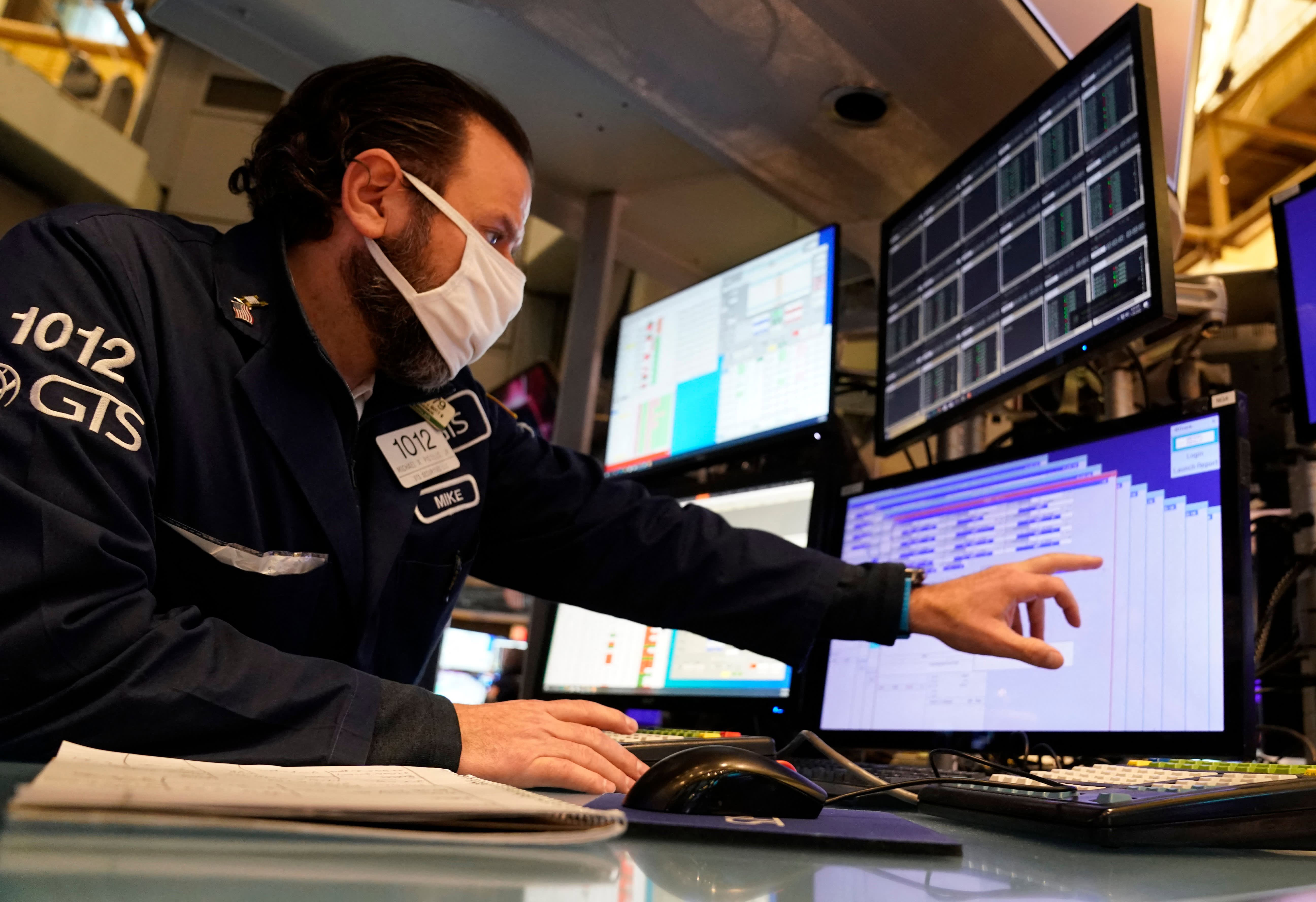Stocks gain for a third day as the market’s comeback from the depths of the January sell-off continues

Stocks hovered around the flatline Tuesday, the first day of February, as Wall Street tried to find its footing after a wild January.
The Dow Jones Industrial Average climbed 167 points, or 0.4%. The S&P 500 rose 0.3% and the Nasdaq Composite gained 0.2%.
Bank stocks rose Tuesday, with Goldman Sachs and JPMorgan Chase gaining 2.2% and 1.5%, respectively. Wells Fargo also advanced more than 3%.
In Big Tech, Netflix shares rose 4%, and Alphabet advanced 1.2%. Facebook-parent Meta Platforms and Amazon also traded higher.
Tuesday’s moves came as traders awaited key earnings releases from Alphabet — which is slated to report after the bell — and Amazon and Meta, which report later in the week.
“People are just in a holding pattern right now waiting for these big tech companies to report,” Infrastructure Capital Management CEO Jay Hatfield said.
“The combination of earning seasons starting and the bond market finding a bottom allowed the market to stabilize,” Hatfield added. “Volatility will continue to drop, and the market will just be driven by the remainder of the earnings reports.”
It’s been a solid earnings season thus far, with 78.5% of S&P 500 companies that have posted results beating bottom-line expectations, according to FactSet.
UPS reported better-than-expected earnings and hiked its quarterly dividend, sending the stock up more than 13%. Shares of Exxon Mobil gained more than 3% after the company reported better-than-expected quarterly earnings and revenue that jumped more than 80% year over year.
Traders also pored over mixed U.S. manufacturing data. The Institute for Supply Management said its manufacturing index came in at 57.6 for January, down 1.2 points from December. The data also showed that prices jumped by 7.9 points to 76.1 month over month — a sign of rising inflation.
Volatile January
Tuesday’s moves follow a two-day rally on Wall Street that ended a volatile month of trading.
Over the past several days, investors have stepped in to buy a dip that briefly knocked the S&P 500 into correction territory — down at least 10% from a recent high. The large-cap index is up more than 3% in the past week.
While stocks pulled off a tech-driven rally Monday — with the Nasdaq surging more than 3% — the major averages still suffered a brutal month marked by wild price swings. The blue-chip Dow slid 3.3% for the month. The S&P 500 and Nasdaq suffered their worst monthly declines since March 2020, falling 5.3% and 8.98%, respectively. It was also the S&P 500′s biggest January decline since 2009.
January’s sell-off came as the Fed signaled its readiness to tighten monetary policy, including raising interest rates multiple times this year, to tame inflation that has shot up to the highest level in nearly four decades, and reducing its balance sheet. Investors flocked out of growth-oriented technology shares, which are particularly sensitive to rising rates.
Volatility exploded as investors deciphered the Fed’s messaging on its policy pivot. At one point last week, the S&P 500 dipped into correction territory on an intraday basis. The recent comeback pushed the large-cap benchmark 6.3% below its peak. Meanwhile, the tech-heavy Nasdaq is still in a correction, down 13% from its all-time high.
Ed Yardeni, president of Yardeni Research, said last month’s market activity hasn’t turned him bearish, however.
“We believe that once the FOMC starts to raise the federal funds rate and details the pace of running off the Fed’s balance sheet, the financial markets will learn to live with tightening monetary policy as long as it doesn’t risk causing a recession,” he said Tuesday.
To be sure, February is historically a week trading month, said Sam Stovall, chief investment strategist at CFRA.
“We’re starting February on a traditionally weak note in that it is the second worst month of the year on average for the S&P, posting a minor decline on average and rising only 53% of the time,” Stovall said. “That makes it second worst only to September’s deeper average decline. To make matters worse, February has fallen even more whenever it follows a down January.”
—CNBC’s Hannah Miao contributed to this report.




